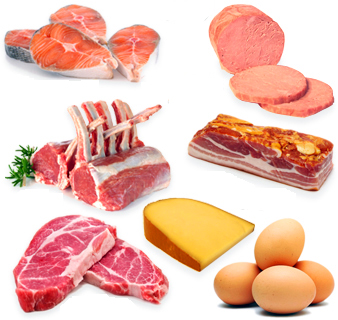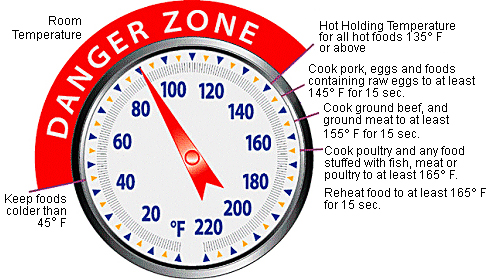Temporary Food Facilities Training - Bacteria
Food Protection
Food must be properly handled because bacteria may be present on products when you purchase them. Plastic-wrapped boneless chicken breasts and ground meat, for example, were once part of live chickens or cattle. Raw meat, poultry, seafood, and eggs are not sterile.
Neither is fresh produce such as tomatoes, sprouts, and melons. Foods, including safely cooked, ready-to-eat foods, can become cross-contaminated with bacteria transferred from raw products, meat juices, or other contaminated products or from food handlers with poor personal hygiene. So, you need to control the conditions that enable bacteria to grow and multiply.
Bacteria need:
- Moist, protein-rich food
- Temperature range: 45º F- 135° F
- Time to grow: 2 Hours
Moist, protein-rich foods are called Potentially Hazardous Foods, also known as (PHFs)
Examples of PHFs:
- Cooked meat products such as stews, gravy, and soups made with meat or meat stock
- Meat and poultry, both raw and cooked
- Fish, shellfish, and other seafood
- Cooked rice, beans and pasta
- Baked Potatoes, cooked corn-on-the-cob
- Raw seed sprouts
- Cut melons
Examples of nonPHFs:
- Raw uncut vegetables, except spouts,
- Uncut fruits
- Breads
- Meat jerky
- Candy
- Uncooked rice, beans, and pasta
Bacteria multiply faster in a specific temperature range. This temperature range is 45°F to 135°F and is called the Danger Zone. So you need to minimize the time food is in the Danger Zone.



